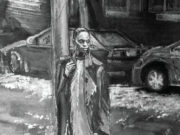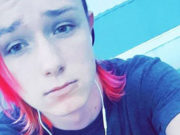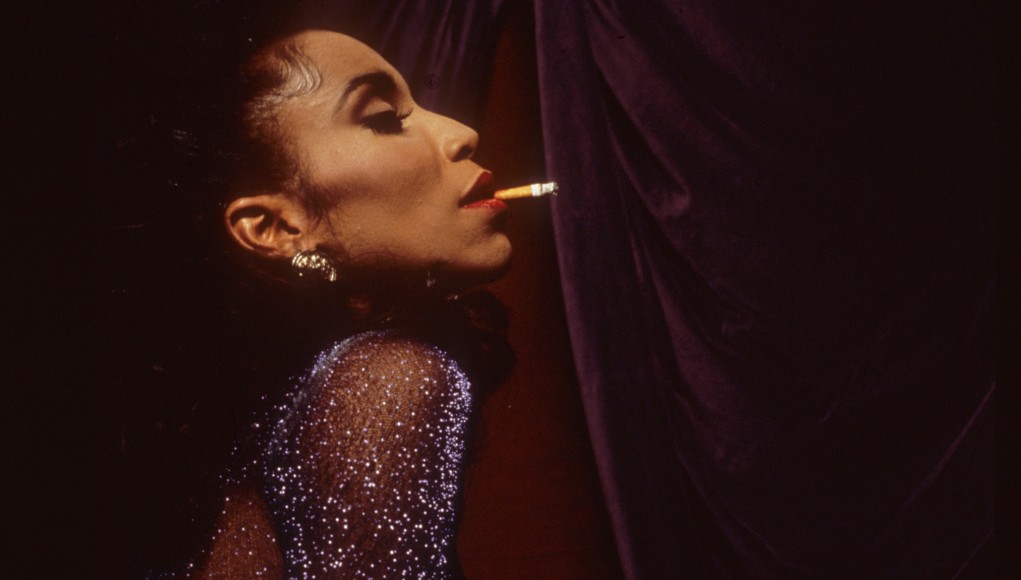PARIS IS BURNING
Between 1987 – 1989, there had been over 29,500 reported AIDS related deaths in NYC alone. Fear and Ignorance diluted truth and fact, and gay men were shunned, beaten, abused, forgotten. DRAG queens were even more brutally treated, whether they looked fabulous or FABULOUS. In 1987 Harlem, NYC, gay BALLs were at their crescendo, voguing was in its infancy, and it was here gay people found community. This Gay/DRAG community is captured wonderfully in Jennie Livingston’s 1990 documentary, “Paris Is Burning.”
Filmed on location at the Imperial Elks Lodge, at 129th street, in Harlem NY, we are introduced to a lifestyle that promotes love and acceptance, circa the late 1980’s. Gay Balls have been around since the 1960’s, and still take place today. “Paris” is about the late 1980’s Ball circuit and how the lives of those gay men and women brought them to this circuit. Their sense of safety and family is pervasive, within the confines of those walls.
If you can pass to the untrained eye, or even the trained eye, and not give away that you are gay, that is ‘real’

This sense of ‘realness’ was an attempt from society to suppress the LGBT community from being themselves in public. There was a conscious effort to find this ‘realness’, this ability to blend into society without a ‘tell’ that you were gay. Said Dorian Corey, “If you can pass to the untrained eye, or even the trained eye, and not give away that you are gay, that is ‘real’.” In this sense, the 1980’s gay scene parallels the present day transgender scene. Transgender women and men seek this sense of ‘realness’ or ‘passing’ in much the same way.
It is all about feeling comfortable in one’s own skin, and being able to express one’s self, without fear of retribution. Here is where their personal fears are hurdled, and the freedom to express themselves. Expressing their own courage to ‘walk the floor’, is akin to a rite of passage. To walk the floor is to participate in the Ball. Ranging from the uber flamboyant to the risqué to the pedantic, there was a category to fit virtually every desired need for expression.
Either leaving home or being kicked out between the ages of 13 – 15, all because they were gay, is an all to familiar story in “Paris’s” Gay and Transsexual community. The want of a family is the strongest desire for those disenfranchised youth. This longing drew them to a ‘house’ within this gay community. To be accepted into a ‘house’, one first had to walk the floor.
Everybody who’s young has a hope and a dream
Eileen Ford
Featured ‘Houses’ in “Paris” are Xtravaganza, LaBeija, Ninja, Pendavis, and St. Laurent. Family here were gang-like, featuring love instead of violence. Accepted, without condition or blood relation, that was a dream for many.

Most of the members of the gay community had a desire to model, to appear in the pages of magazines like Mademoiselle, Depeche Mode, Elle, or Vogue. ‘Voguing’ came to be from the form of movement and dance that emulated the poses of models in Vogue magazine. Willi Ninja, mother of house “Ninja,” was a self taught dancer, master of Vogue, and the inspiration for Madonna’s “Vogue” music video.
“Paris” introduced us to a lexicon of slang specific to this scene, such as:
- Banjee Girl: A girl who is Ghetto
- Mopping: Stealing
- Reading: Ridiculing a person by pointing out their flaws in an obvious way, in an effort to elicit the greater laugh from the crowd
- Shade: a gay person dissing another gay person, in an off-handed way, without directly saying anything to that effect
- House: A group of human beings in a mutual bond; family. A “Gay street gang.”
- Realness: where a gay person tries to blend, ‘pass’, and go undetected in the heterosexual world.
Some of them[society] say that we’re sick, or crazy, and some of them think that we’re the most gorgeous special things on earth
 Venus Xtravaganza
Venus Xtravaganza
One of the featured transgender girls, Venus Xtravaganza. She was a beautiful, green-eyed girl with a passion to be herself. She lived on her own terms, and took chances with her life by placing herself into dangerous, and self-described risky situations. Subtle, is the mention of her passing by Angie Xtravanganza, the mother of house Xtravanganza. Visibly, sentimentally, affected is her expression.
Love it or loathe it, there is no denying the palpable presence of the this film. It resonates today, 26 years after its initial release, as strongly as it had back in 1990. “Paris is Burning” is available on iTunes, Amazon, and Netflix.
copyright: 2006 WMG(Vogue video)
mir, irini, peace, amn,
-jahn
































